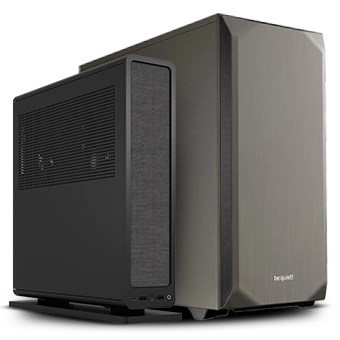Which is better GTX or RTX?
Posted on 2:28pm, Wednesday 4th December, 2022
Graphics processing units (GPUs) are an integral part of any computer system, responsible for rendering and displaying images on the screen. In the world of computer graphics, two of the most popular GPU series are the NVIDIA GTX and RTX series. In this article, we will compare the GTX and RTX series, discussing their key features and performance to help you decide which one is the best fit for your needs and will enhance your gaming PC.
GTX vs. RTX: Which One is the Better Option?
When it comes to choosing a graphics card for your computer, There are plenty out there to choose from but today we'll compare two lines of popular NVIDIA GPUs the GTX and RTX. Both series offer a range of powerful and feature-rich options, but which one is the best choice for you?
To answer the question "Which is better GTX or RTX?", we'll take a deep dive into the features and performance of GTX and RTX graphics cards to help you decide which one is the better option.
What is a GTX?

GTX stands for "Giga Texel Shader eXtreme" and is a type of graphics processing unit (GPU) produced by NVIDIA. GPUs are specialized circuits that are designed to accelerate the rendering of images and video, which are important for many applications, including gaming, video editing, and scientific simulations. Also, it is known for its high performance and is often used by gamers and other users who need powerful graphics capabilities. In layman's terms, GTX is a type of computer hardware that is designed to make it easier and faster to display images and video on a computer.
GTX was first introduced by NVIDIA in 2006 and has since become a popular choice for gaming and other applications that require high-quality graphics performance. The GPUs in the GTX line is based on a variety of different architectures, including Fermi, Kepler, Maxwell, and Pascal.
What is an RTX?

RTX also known as "Real-Time Ray Tracing" is a type of graphics processing unit (GPU) developed by NVIDIA and a big upgrade from previous generations. These GPUs are designed to be used in a variety of applications, including gaming, professional visualization, and machine learning.
The NVIDIA RTX line of GPUs is based on the Turing architecture, which was introduced by NVIDIA in 2018. The Turing architecture includes a number of new features and tech that are designed to improve the performance of the GPUs, including real-time ray tracing, which is a technique used to generate highly realistic and detailed images in 3D environments.
The RTX GPUs are known for their high performance and are often used in high-end gaming laptops and desktop computers. They are also used in professional visualization applications, such as 3D rendering and video editing, and in machine learning applications, where they can be used to train and run artificial intelligence models.
What is the Difference Between GTX and RTX?
The main difference between the GTX and RTX series is the inclusion of ray tracing and DLSS (Deep Learning Super Sampling) in the latter. These features allow the RTX series to offer more realistic and immersive new graphics capabilities, but they also come with a price premium compared to the GTX card series.
Another key difference between the two series is their performance. In general, the RTX card series offers better performance than the GTX series, especially in games that support ray tracing and DLSS. However, the difference in performance may vary depending on the specific models and applications being compared.
What is Ray Tracing?
Ray tracing is a rendering technique that uses advanced algorithms to create more realistic lighting effects, shadows, and reflections in 3D graphics. DLSS is a technology that uses artificial intelligence to improve the performance of games and other applications by rendering images at lower resolutions and upscaling them to the desired resolution. This is achieved by simulating the way light rays bounce off objects and surfaces in a virtual scene.
Ray tracing allows for more accurate and realistic graphics, but it also requires significant computational power to perform. This is why ray tracing is only supported on higher-end graphics cards like those in the RTX series.
GTX Popular Models
Let's take a closer look at some popular models in NVIDIA’s GTX series:
GTX 1650
This is a budget-friendly graphics card that offers good performance for its price. It is suitable for playing games at 1080p resolution and lower settings.
GTX 1660
This is a mid-range graphics card that offers better performance than the GTX 1650. It is suitable for playing games at 1080p and 1440p resolution with higher settings.
GTX 1660 Ti
This is a high-end graphics card that offers excellent performance for its price. It is suitable for playing games at 1080p, 1440p, and 4K resolution with high to ultra settings.
GTX 1070
This is a premium graphics card that offers excellent performance for gaming and professional applications. It is suitable for playing games at 1080p, 1440p, and 4K resolution with high to ultra settings.
GTX 1080
This is a top-of-the-line graphics card that offers the best performance in the GTX series. It is suitable for playing games at 1080p, 1440p, and 4K resolution with ultra settings.
GTX 1080 Ti
This is a flagship graphics card that offers the ultimate performance in the GTX series. It is suitable for playing games at 1080p, 1440p, and 4K resolution with the highest possible settings.
RTX Popular Models
Now let's take a closer look at some popular models in the RTX series:
RTX 2060
This is a mid-range graphics card that offers good performance and support for ray tracing and DLSS. It is suitable for playing games at 1080p, 1440p, and 4K resolution with high to ultra settings.
RTX 2070
This is a high-end graphics card that offers excellent performance and support for ray tracing and DLSS. It is suitable for playing games at 1080p, 1440p, and 4K resolution with ultra settings.
RTX 2080
This is a premium graphics card that offers excellent performance and support for ray tracing and DLSS. It is suitable for playing games at 1080p, 1440p, and 4K resolution with the highest possible settings.
RTX 2080 Ti
This is a flagship graphics card that offers the ultimate performance and support for ray-tracing and DLSS, featuring an impressive 544 ray-tracing tensor cores. It is suitable for playing games at 1080p, 1440p, and 4K resolution.
Price Comparison
One factor to consider when choosing between a GTX and an RTX graphics card is the price. In general, the RTX series is more expensive than the GTX series, especially for the higher-end models.
For example, the RTX 2060 has a starting price of around $350, while the GTX 1660 Ti has a starting price of around $280. The difference in price may be justified by the additional features and performance of the RTX series, but it's worth considering whether the premium is worth it for your needs.
Compatibility
Another factor to consider is compatibility with different hardware and software. In general, both the GTX and RTX series are compatible with a wide range of hardware and software, including different types of CPUs, motherboards, and operating systems.
However, there may be some differences in compatibility depending on the specific models and configurations. For example, some models in the RTX series may have higher power requirements or require specific types of motherboards to function properly. It's always a good idea to check the compatibility of a graphics card with your hardware and software before making a purchase.
Gaming Performance
Of course, one of the main reasons people buy graphics cards is for gaming performance. In this regard, both the GTX and RTX series offers excellent performance for a wide range of games and applications.
However, the specific performance of a graphics card will depend on a number of factors, including the model, resolution, graphics settings, and the specific game being played. In general, the RTX series offers better performance than the GTX series, especially in games that support ray tracing and DLSS.
Professional Applications
In addition to gaming, graphics cards are also used in a variety of professional applications, such as video editing, 3D rendering, and scientific simulations. In these contexts, both the GTX and RTX series offer excellent performance and features.
However, the specific performance and features of a graphics card will depend on the specific models and applications being used.
In conclusion, after comparing the features and performance of NVIDIA GTX and RTX graphics cards, we have come to the following conclusions:
The main difference between the two series is the inclusion of ray tracing and DLSS in the RTX series, which allows for more realistic and immersive graphics. However, these features come with a price premium compared to the GTX series.
In terms of performance, the RTX series generally offers better performance than the GTX series, especially in games that support ray tracing and DLSS. However, the specific performance of a graphics card will depend on a number of factors, including the model, resolution, graphics settings, and the specific game or application being used.
Based on these considerations, to help you decide which is better GTX or RTX? we would recommend the GTX series for parents buying PCs for their children due to its lower price and good performance for gaming. For adults with advanced knowledge of PC gaming, we would recommend the RTX series due to its support for ray tracing and DLSS and its higher performance in games and professional applications.
Of course, the best choice will depend on the specific needs and budget of the individual, as well as the compatibility of the graphics card with their hardware and software. It's always a good idea to research and compare different models and brands before making a purchase to ensure you get the best value for your money.
NVIDIA has many other great options, but never forget about AMD, Intel and many other great brands.







